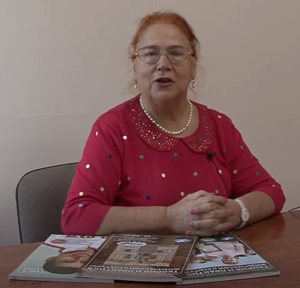Age dynamics of speed and speed-strength fitness indicators of boys 10-13 years old with different volume of motor load
ˑ:
Postgraduate student Zhu Huaxing1
Postgraduate student Nyu Yingdon2
Dr. Hab., Professor E.P. Vrublevskiy1, 3
1Skorina Gomel State University, Gomel, Belarus
2Рolessky State University, Pinsk, Belarus
3Smolensk State University of Sports, Smolensk
Objective of the study was to identify age-related changes in indicators of speed and speed-strength readiness of boys 10-13 years old with different amounts of motor load.
Methods and structure of the study. Students from a school in Qinhuangdao (China) took part in the scientific work. Beginning at age 10, 83 schoolchildren were tested at the end of the school year over three years. At the same time, 42 boys were involved in the school athletics section, and the rest did not play sports. The dynamics of speed and speed-strength abilities were determined using tests that are widely described in the specialized literature and recommended for assessing the physical fitness of schoolchildren of various ages.
Results and conclusions. Additional and targeted physical activity contributes to the faster acquisition of the required level of physical fitness by boys aged 10-13 years, and the predominant impact on their motor abilities, which are in the stage of accelerated age-related development, leads to significant shifts in the development of the latter. To increase the speed abilities of boys, the most favorable age is 10–11 years, and for speed-strength abilities – 12–13 years.
Keywords: schoolchildren 10-13 years old, speed and speed-strength abilities, young athletes, dynamics.
References
- Volkov L.V. Teoriya i metodika detskogo i yunosheskogo sporta [Theory and methodology of childrens and youth sports]. K.: Olimpiyskaya literature publ., 2002. 294 p.
- Vrublevskiy E.P., Khorshid A.Kh., Albarkayi D.A. Vliyaniye napravlennosti treniruyushchikh vozdeystviy na rost sily myshts yunykh begunov na korotkiye distantsii [The influence of the direction of training influences on the growth of muscle strength in young short-distance runners]. Teoriya i praktika fizicheskoy kultury. 2019. No. 4 (970). pp. 3–5.
- Guba V.P., Bulykina L.V., Achkasov E.E., Bezuglov E.N. Sensitivnyye periody razvitiya detey. Opredeleniye sportivnogo talanta: monografiya [Sensitive periods of childrens development. Definition of sports talent: monograph]. M.: Sport publ., 2021. 176 p.
- Guzhalovskiy A.A. Razvitiye dvigatelnykh kachestv u shkolnikov [Development of motor qualities in schoolchildren]. Mn.: Narodnaya asveta publ., 1978. 88 p.
- Sergiyenko L.P. Sportivnyy otbor: teoriya i praktika: monografiya [Sports selection: theory and practice: monograph]. M.: Sovetskiy sport publ., 2013. 1048 p.
- Solodkov A.S., Sologub E.B. Fiziologiya cheloveka. Obshchaya. Sportivnaya. Vozrastnaya [Human physiology. General. Sports. Age]. Textbook. 5th ed., corr., sup. M.: Sport publ., 2015. 620 p.
- Wychowański M. Wybrane metody oceny dynamiki układu ruchu człowieka. Warszawa: AWF, publ., 2008. 209 p.



